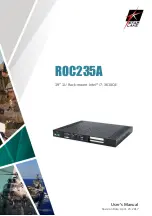
Note: Configuration of anchor bracket and brake adjuster housing may vary, depending
upon axle. Refer to typical applications on Pages 2 and 3.
Note: Block wheels to prevent
vehicle from rolling. Ensure system
tank pressure is above 100 PSI.
Check that the push rod is fully retracted;
apply air to release spring brake. If air is not
available, spring brake must be manually
caged back.
Install anchor bracket loosely as illustrated
(Figure 9).
Some strap brackets have two mounting
holes. Proper mounting location is
determined by the length of adjuster arm.
5” and 5 1/2” adjuster arm lengths utilize
the shorter hole location while 6” and 6 1/2”
length adjusters utilize the longer hole
locations.
Do not tighten anchor bracket fasteners at
this time.
Apply “Anti-Seize” type lubricant to
camshaft splines.
Install the brake adjuster onto the camshaft
with the adjusting hex pointing away from
the brake chamber (Figure 10).
Secure the brake adjuster on the camshaft.
Use at least one inner washer and enough
outer washers to allow no more than .060
movement of adjuster on camshaft. (Per
TMC recommended practice RP609-A.)
Note: Do NOT pull push rod out to
meet the brake adjuster.
Rotate the 7/16” adjusting hex nut
CLOCKWISE until the clevis hole lines up
with the brake adjuster arm hole.
Apply anti-seize to clevis pin, install and
secure with cotter pin.
4
Figure 9
Figure 10
S-ABA Installation Procedures
STEP 1
STEP 2
Summary of Contents for S-ABA
Page 1: ...Service Manual S ABA Self Setting Automatic Brake Adjusters Truck and Trailer Applications...
Page 17: ...14 Notes...
Page 18: ...15 Notes...
Page 19: ......






































